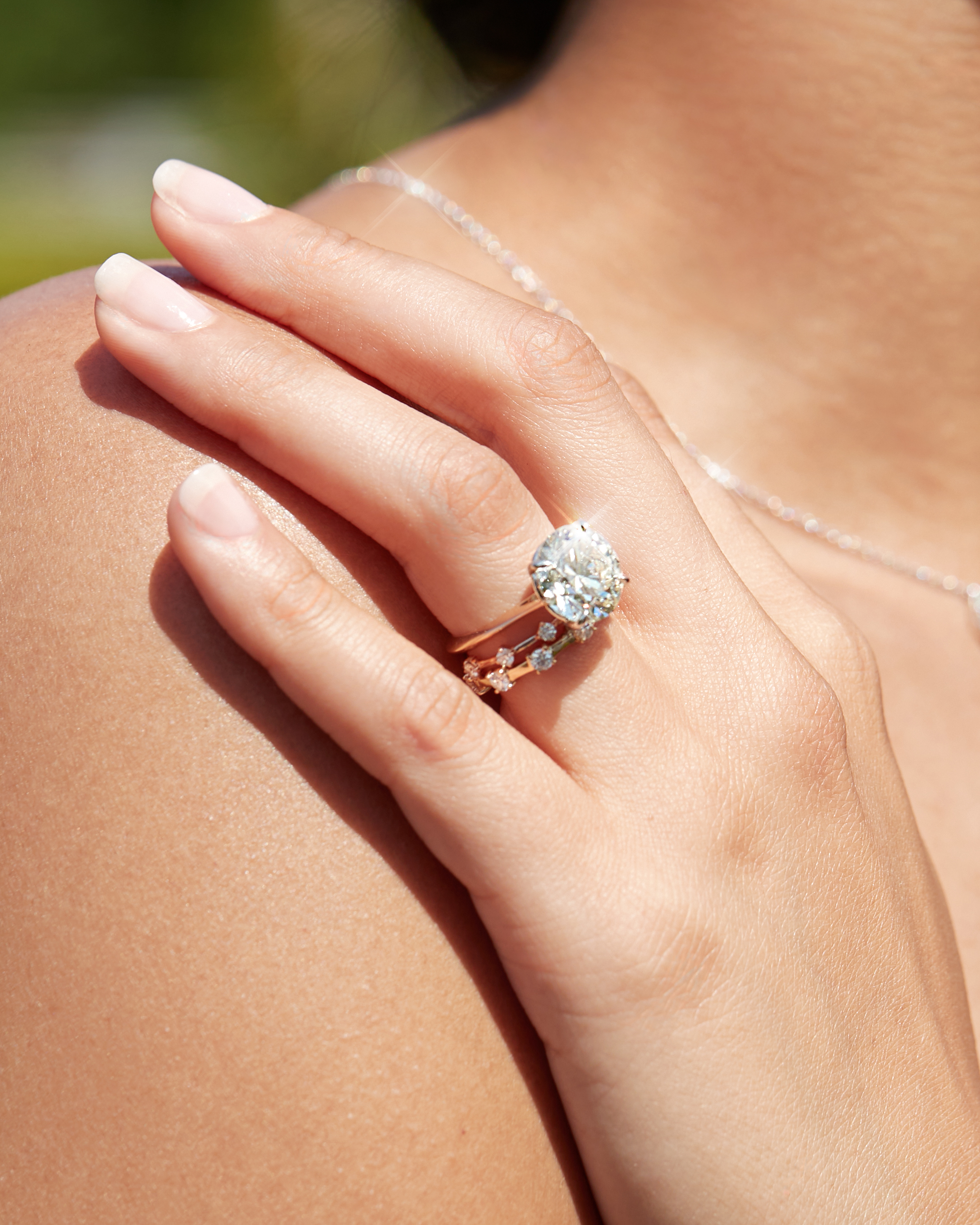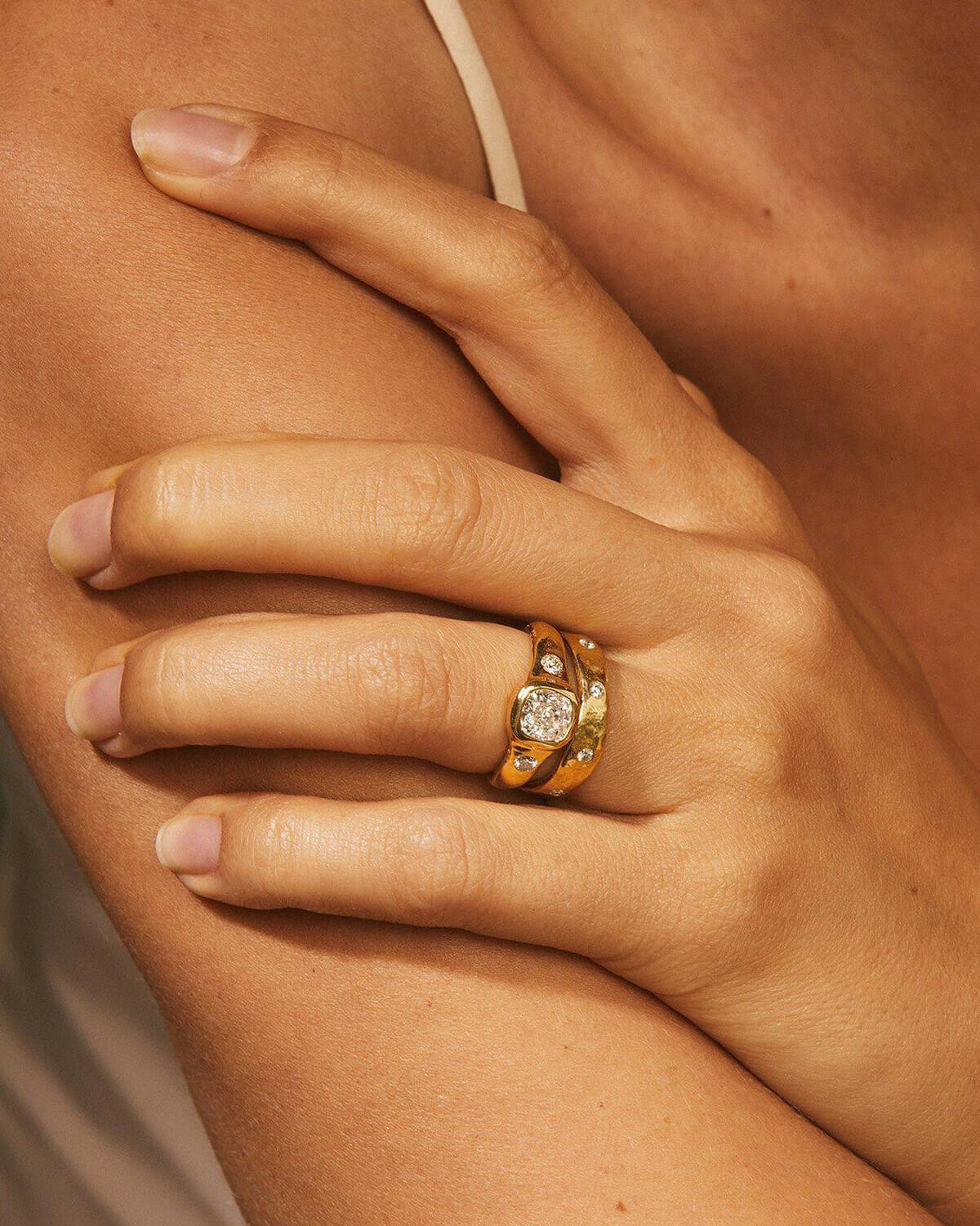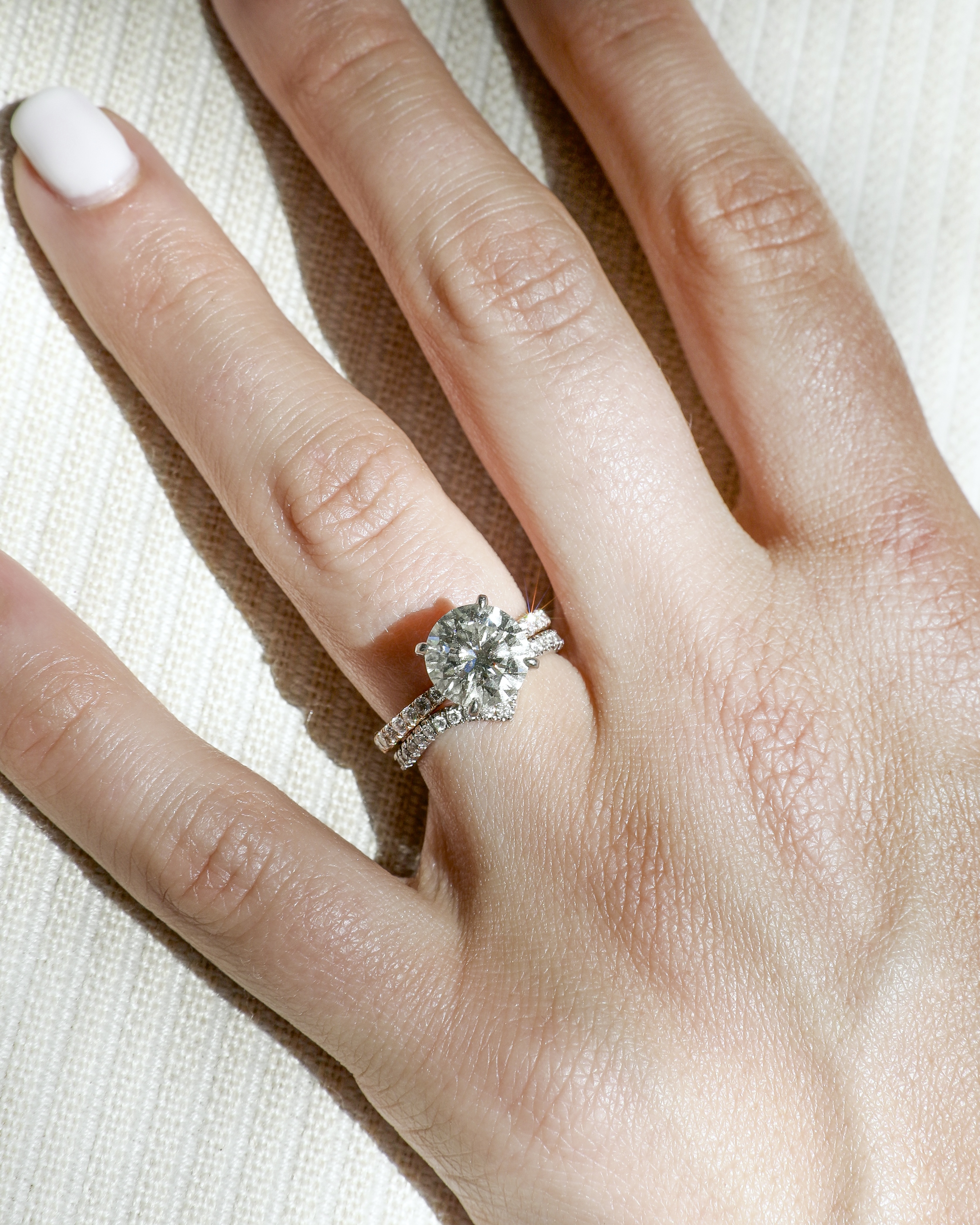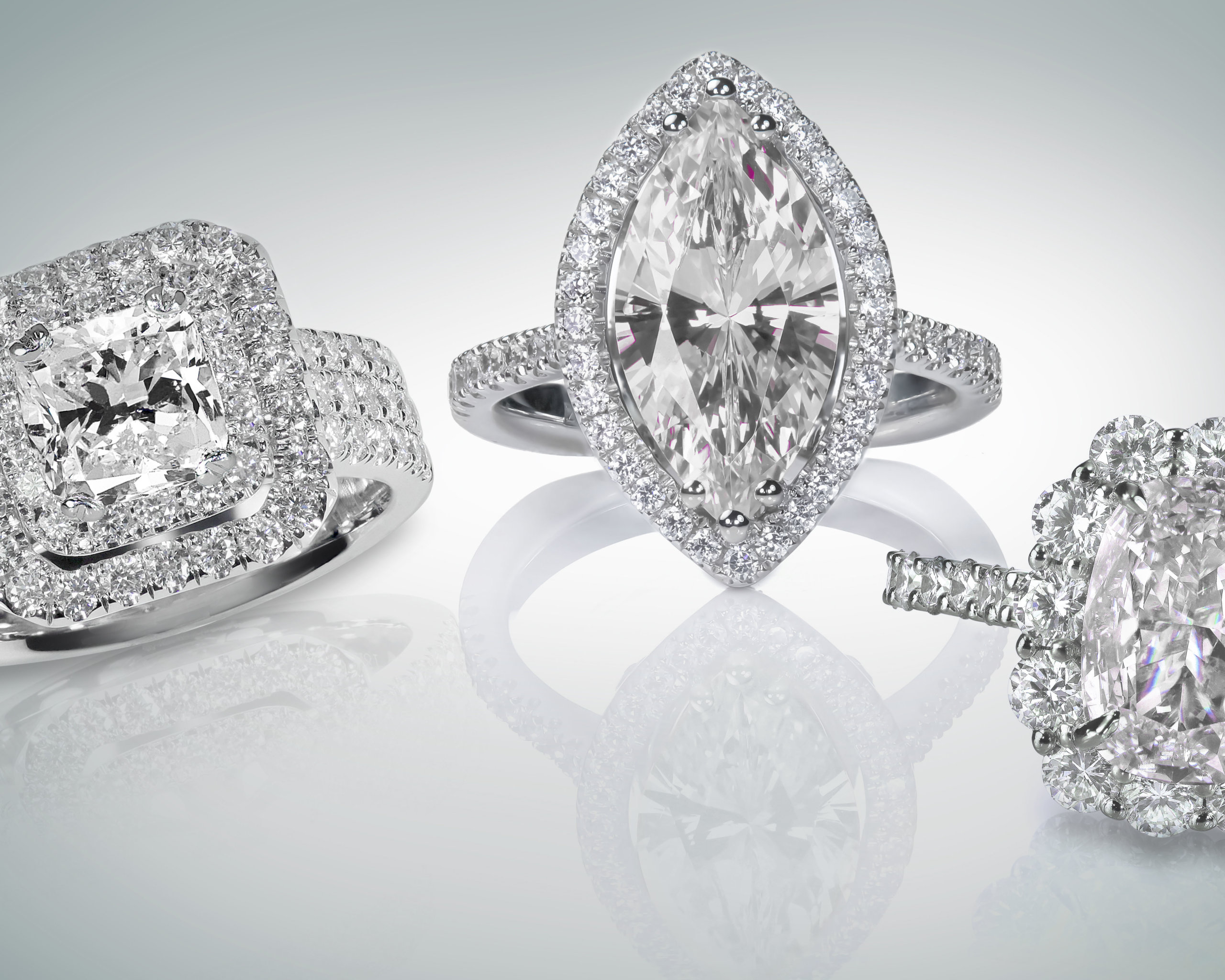Your engagement ring is one of the most meaningful purchases you’ll ever make—a cherished symbol of love and a valuable investment. Given its high value and sentimental importance, insuring your engagement ring is one of the best ways to protect it against life’s unexpected moments, from accidental damage to loss or theft.
The right insurance policy ensures that if something happens, your natural diamond ring can be repaired or replaced without added stress. But not all policies are created equal, and understanding coverage details—plus any exclusions—can make all the difference.
Do I Need Engagement Ring Insurance?
If you’re wondering whether engagement ring insurance is really necessary, the short answer is yes. Your engagement ring is one of the most sentimental and valuable items you’ll own, and while no one expects the worst to happen, accidents, loss, and theft are always possibilities.
Unlike other types of jewelry, an engagement ring is worn daily, making it more susceptible to damage or being misplaced. Whether it’s a diamond coming loose from its setting, a ring slipping off while swimming, or an unexpected theft, having ring insurance ensures you won’t have to face the financial burden of replacing or repairing your ring on your own.
If your ring holds sentimental value—perhaps it’s an heirloom or custom-designed piece—having insurance that allows for repair or replacement with a comparable item is especially important. The right policy can help ease the stress of losing something so meaningful while ensuring you’re financially protected.
What Does Ring Insurance Cover?
A comprehensive ring insurance policy is designed to protect your engagement ring against life’s unexpected mishaps. While coverage can vary by provider, most specialty jewelry insurance policies include protection against:
- Loss: If your ring is lost, whether it slips off while swimming or mysteriously disappears, insurance can cover the full replacement cost.
- Theft: If your ring is stolen, whether from your home, a hotel room, or even your purse, a policy ensures you’re not left with a financial loss.
- Accidental damage: Engagement rings are meant to be worn daily, which means damage can happen. Many policies cover chipped stones, bent prongs, or broken settings, ensuring repairs are covered.
- Mysterious disappearance: If you can’t pinpoint exactly when or where your ring went missing, some policies still offer coverage for a replacement.
That said, not all policies cover everything, so it’s important to read the fine print. Some exclusions may include wear and tear, intentional damage, or loss due to negligence. Always check with your provider to fully understand what’s included in your coverage, so you can wear your ring worry-free.
How to Get Ring Insurance
1. Get an Appraisal
Have your natural diamond ring appraised professionally to determine its value. Regularly update the appraisal every 3-5 years, as natural diamonds appreciate in value. It’s also important to note that a diamond grading report you may receive with your engagement ring is not an appraisal.
2. Choose the
Right
Coverage
Opt for jewelry insurance that covers loss, theft, and damage. Consider a scheduled jewelry policy for comprehensive protection.
3. Keep Documentation
Maintain detailed records, including photos, receipts, and appraisals to support any future jewelry claims.
4. Review Your
Policy
Regularly
Ensure your policy reflects any changes in your ring’s value, particularly after resizing, setting modifications, or market changes.
5. Store Safely
When
Not Wearing
When not wearing your ring, store it in a secure location. Avoid keeping multiple valuable items in the same place to reduce the risk of losing everything in a single incident.
6. Have Your Ring Inspected Annually
Have your engagement ring inspected at least once a year. Regular inspections ensure that the diamond or gemstones are securely set, and that the band and prongs haven’t succumbed to wear and tear. Some insurance providers may even require annual inspections to keep your jewelry insurance valid.
7. Travel Smart
Only travel with your engagement ring when necessary and store it in a hotel safe when not wearing it.
Does Homeowners Insurance or Renters Insurance Cover My Engagement Ring?
While your homeowners or renters insurance policy may provide some coverage for jewelry, it’s often limited—and not nearly enough to fully protect your engagement ring. Jewelry is typically categorized under personal property, meaning it’s covered in the event of a catastrophic loss, such as a fire. However, that coverage is shared with all your belongings. For example, if your policy includes $100,000 in personal property coverage, that amount must cover everything from clothing and furniture to electronics and décor—your jewelry included.
Even more concerning, standard policies come with strict limits. Most only cover jewelry theft up to $1,500, regardless of how much personal property coverage you have. Worse, they typically do not cover accidental loss, mysterious disappearance, or everyday damage—some of the most common risks engagement rings face.
Additionally, filing a jewelry claim can increase your homeowners insurance premium, and any payout will likely have a deductible subtracted. For those with a high-value ring, relying on a standard policy could leave you significantly underinsured. That’s why many couples opt for additional jewelry-specific coverage to ensure full protection.
Increasing Coverage with Your Existing Insurance
1. Blanket Coverage
or a Rider
Blanket coverage, or a rider, can increase jewelry theft coverage to $5,000, but it may not cover loss or mysterious disappearance, and claims can increase home insurance costs.
2. Personal
Property Floater
A personal property floater provides insurance coverage for specific items, including your engagement ring, and often covers loss and theft with little or no deductible. You’ll need an appraisal for each item.
Specialty Jewelry Insurance
For the most comprehensive protection, a standalone jewelry insurance policy is the best option for ring insurance. Companies like Jewelers Mutual, Zillion, Gem Shield, BriteCo, and Lavalier Jewelry Insurance specialize in covering high-value pieces, offering policies tailored specifically to engagement rings and fine jewelry. Unlike standard homeowners or renters insurance, these policies are designed to fully cover loss, theft, accidental damage, and even mysterious disappearance.
One of the biggest perks of specialty jewelry insurance is the added benefits. Many policies cover preventative maintenance—such as prong tightening, repairs, or even replacing a lost stone—helping to keep your ring in its best condition. Plus, instead of providing a payout, these insurers often work directly with your jeweler to replace or repair your ring, ensuring you receive a comparable piece without the hassle.
Another major advantage? Filing a jewelry claim won’t impact your home insurance policy or cause your premium to rise. This makes standalone jewelry insurance a smart investment for anyone looking to protect both their ring and their overall financial security.
Can I Insure a Vintage, Antique, or Heirloom Ring?
Absolutely! Vintage and antique engagement rings can (and should) be insured, but they often require a bit more attention when choosing the right policy. Because these rings are one-of-a-kind and may have unique craftsmanship or rare gemstones, insuring them properly ensures they can be repaired or replaced with something of comparable value if lost, stolen, or damaged.
The first step in insuring a vintage or antique ring is getting a professional appraisal from a jeweler who specializes in antique pieces. This appraisal should detail not only the ring’s market value but also its historical significance, craftsmanship, and any unique features. Some insurers may require updated appraisals every few years to reflect changes in market value.
When choosing a policy, look for coverage that includes antique and estate jewelry to ensure your ring is protected at full value. Specialty jewelry insurers often have policies designed for vintage pieces, offering options for repair or replacement that honor the ring’s originality. Since antique rings can be difficult to replace exactly, some policies allow you to work with a jeweler to create a custom reproduction if necessary.
How Much Does Ring Insurance Cost?
The cost of insuring your engagement ring is surprisingly affordable. On average, jewelry insurance costs between 1-2% of your ring’s value per year. That means insuring a $5,000 ring would typically cost between $50 and $100 annually—a small price to pay for peace of mind.
Several factors can influence your ring insurance premium, including your location, the ring’s value, and the type of coverage you choose. Some insurance providers also offer discounts if you have a home security system, a safe, or other protective measures in place. Ultimately, jewelry insurance is an easy and cost-effective way to protect your most treasured piece.
Insuring your natural diamond engagement ring protects not only the value of your ring but also its emotional value. With the right coverage, you can wear your heirloom worry-free, knowing it’s safeguarded for the future.









